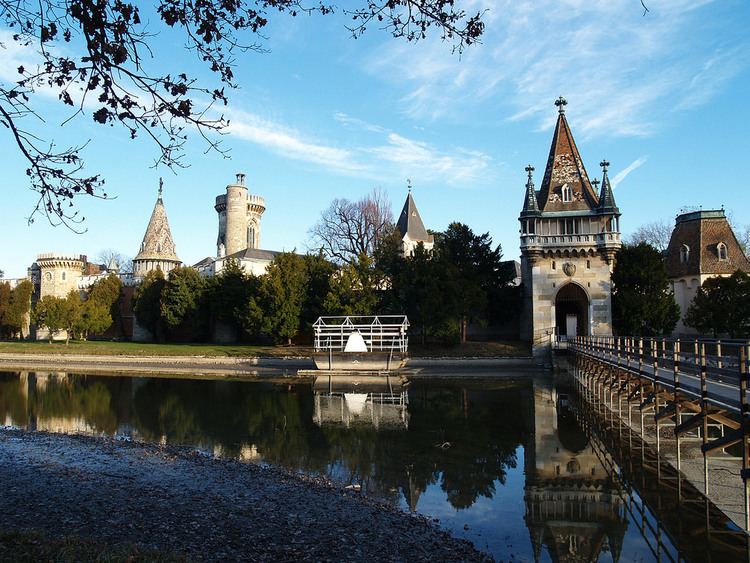Country Austria Elevation 177 m (581 ft) Postal codes 2351, 2361 Area 10.59 km² Local time Tuesday 12:28 AM | Time zone CET (UTC+1) Area code 02236 Population 2,702 (1 Apr 2009) | |
 | ||
Weather 6°C, Wind NW at 8 km/h, 62% Humidity | ||
Laxenburg is a market town in the district of Mödling, in the Austrian state of Lower Austria. Located about 20 km (12 mi) south of the Austrian capital Vienna, it is chiefly known for the Laxenburg castles, which, beside Schönbrunn, served as the most important summer retreat of the Habsburg monarchs.
Contents
Map of Laxenburg, Austria
History
Laxenburg became a Habsburg possession in 1333. Duke Albert III (1349–1395) had a hunting lodge erected here (today called Altes Schloss) and vested the settlement with market rights. The castle again decayed afterwards, until in the 17th century it was restored at the behest of Emperor Leopold I. Rebuilt in a Baroque style by the master builder Lodovico Burnacini, it became the centre of extended gardens and pleasure grounds.
From 1710 onwards the Baroque Blauer Hof (Blue Court), also named Neues Schloss (New Castle), was built according to plans designed by Johann Lucas von Hildebrandt as the residence of the Habsburg vice-chancellor Friedrich Karl von Schönborn. Later Empress Maria Theresa acquired the palace and from 1756 onwards had it lavishly rebuilt her court architect Nicolò Pacassi with a Rococo interior. Laxenburg became the favourite residence of Maria Theresa and her descendants.
The parish church of Laxenburg was erected vis-à-vis between 1693 and 1703 by Carlo Antonio Carlone. Emperor Leopold I himself laid the founding stone. Consecrated in 1699, construction works continued between 1703 and 1724 supervised by the architect Matthias Steinl. It was the first building north of the Alps containing swung facade components (characteristics of the High Baroque architecture).
After 1780, the castle parks were re-arranged as an English landscape garden. It contains several artificial ponds, and, on an island, Franzensburg Castle, named after emperor Francis I of Austria.
The current political municipality was established after the 1848 revolutions. In 1854, Emperor Francis Joseph and his consort Elisabeth spent their honeymoon in Laxenburg. Two of their children, Gisela and Crown Prince Rudolf, were born here. After the dissolution of the Austro-Hungarian monarchy in 1919, the city of Vienna took over the war-damaged castle. Since then, the city of Vienna became the property owner of the park area.
After the Austrian Anschluss to Nazi Germany in 1938, the municipality of Laxenburg temporarily was incorporated the city of Greater Vienna. After World War II, castles and parl were seized by Soviet occupation forces. Upon the 1955 Austrian State Treaty, the place became independent again and returned to the state of Lower Austria.
Plans to held the 1967 World's fair in Laxenburg failed. Since 1973, the International Institute for Applied Systems Analysis (IIASA), a non-governmental research organization with about 200 employees, has been located in the castle. The International Anti-Corruption Academy is also located in Laxenburg, established in 2010 at the historic Palais Kaunitz- Wittgenstein. The Altes Schloss today houses the Filmarchiv Austria.
Politics
Seats in the municipal assembly (Gemeinderat) as of 2015 local elections:
